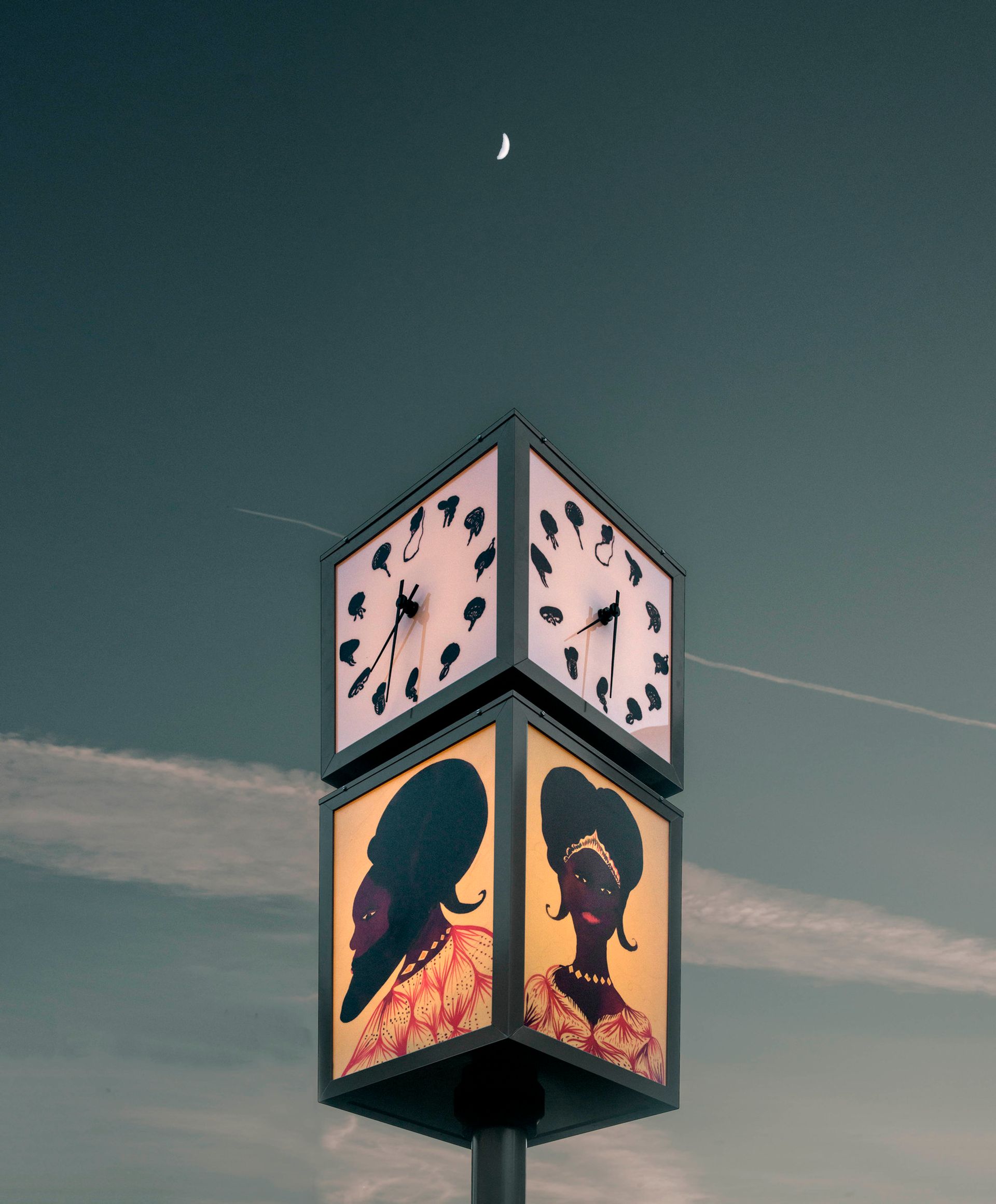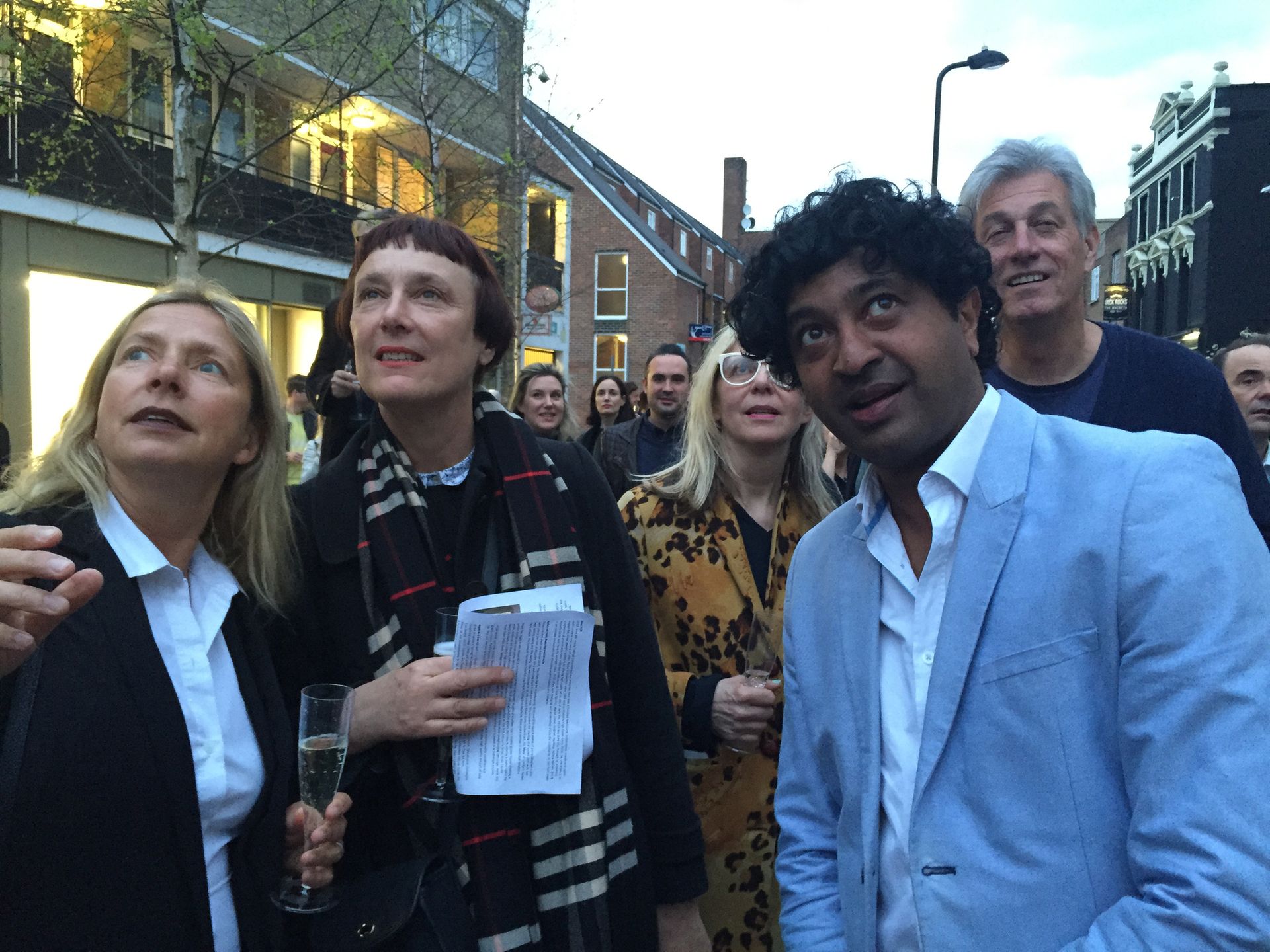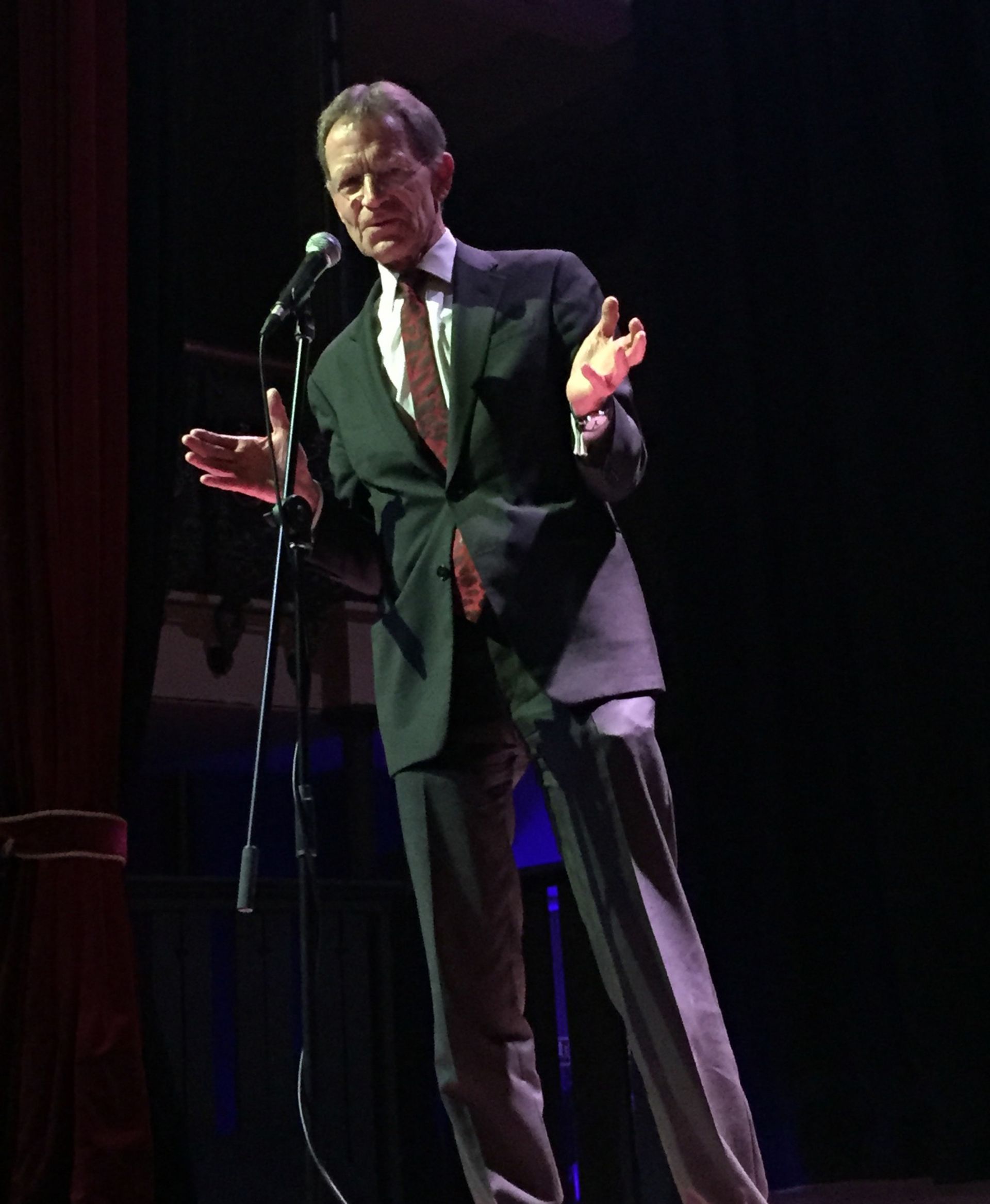Everyone agreed that the determination of Ingrid Swenson, the director of peer, to bring “the experience of high quality art to the high street” was achieved with a vengeance at last night’s grand unveiling of the independent arts organisation’s refurbished new galleries and two new public art commissions.

Just before the sun went down, the lights came up on Chris Ofili’s Black Hands, the inaugural commission for a new four-metre high illuminated pedestal clock whose four-sided face now bears 12 of his signature Afrohead pencil drawings, while the light box below shines out four of his Afromuse portrait heads. (Invited artists will transform this clock annually.)
Although Ofili no longer resides in the neighbourhood and is now based rather further afield in Trinidad, the piece apparently relates to the time when, as a local resident, he made regular visits for a spot of sprucing-up at Dad’s Unisex Hair Salon: Specialists in Afro-Caribbean and European just a block away, on 96 Hoxton Street. (This now sadly defunct emporium is also immortalised in a sign painted on the side of its former building by another East Ender and Peer fan, the artist and Royal Academician Bob and Roberta Smith—who was very much in evidence at last night’s celebrations.)

After admiring Ofili’s clock and agreeing that Angela de la Cruz’s massive 10 by 12 metre Larger than Life painting, crammed into one of the elegant galleries— newly designed by Trevor Horne—was an apt metaphor for Peer’s small scale and large ambition, the crowd of artists, gallery directors and assorted London art worlders made their way down the street to Hoxton Hall, another local landmark, for more merriment.

Here, in the picturesque surroundings of this former music hall, Nicholas Serota, the director of all the Tates, mounted the stage to give fulsome praise to Swenson and Peer’s ability to be rooted in the community but also to break new ground with projects that have had repercussions much further afield. He cited Peer along with other smaller London organisations such as Chisenhale and the South London Gallery as being at the forefront of introducing risk-taking new work both to the capital and the art world in general. He wryly pointing out that, “all are of course run by women”—before spotting the Whitechapel’s Iwona Blazwick and the Camden Arts Centre’s Jenni Lomax in the audience and quickly added that other organisations run by women are also crucial in sustaining new art. He could also have included Frances Morris, the recently appointed—and hugely popular—new director of Tate Modern to this illustrious lineup. Let’s hear it for Peer and smashing up that glass ceiling!


